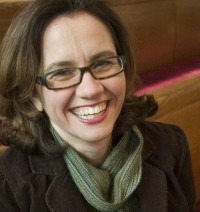What's really real?
I’m in San Francisco. Or, technically, I’m in San Anselmo at San Francisco Theological Seminary, which is a jewel. It is one of the most stunning landscapes of learning I can imagine. But apart from the inspiring space, SFTS is also launching a Center for Innovation in Ministry this week. They are not only harnessing their aesthetic geography, but their intellectual geography as well, taking advantage of being in the pulsing center of our nation's digital wellspring.
I’m here to blog and tweet. Which is kind of nice. I don’t need to lecture, but I get to sponge up the wisdom and reflect on it. I began soaking in it yesterday, when I traveled with Sybrina Atwaters, one of the facilitators of the event. Sybrina recently successfully defended her dissertation at Georgia Tech, where she wrote on faith communities in Second Life. She also has an MTS from Emory. So Sybrina lives out this amazing intersection of sociology, technology and theology.
We talked about the fear we often encounter when presenting ideas to religious bodies, and she explained that people who are mired in technology argue against technology that they are not used to. A pastor might use a cell phone, email, and on-line commentaries to prepare a service, but then she is nervous about the idea of a service in Second Life. In our worship services we might use microphones, power points, and digitally enhanced organs, but we’re anxious about people using paypal.
Many people don’t carry checks or cash any longer, yet we still pass the basket without any acknowledgement of other ways to give—particularly to special offerings. Paper is not more sacred. “Our money is all virtual,” she said. “The whole stock market is made up of ones and zeros.”
“It comes down to what’s really real,” Sybrina said. Then she explained how she will put up a photograph of herself next to her Second Life avatar and ask people what’s more real. They will usually say the photograph.
“Why is that more real?” she asks and points out that it’s a digital recreation that can be enhanced. It can be stretched or altered. Why is it more real?
I responded with the fact that my Second Life avatar (which someone else created for me) is tall and thin, and I am short and curvy.
Sybrina smiled and explained that avatars have taken on a certain embodiment. People are creating avatars that look more like themselves, and often their bodies begin to look more like their avatars.
As the event starts, I'll keep reporting what I'm learning.






